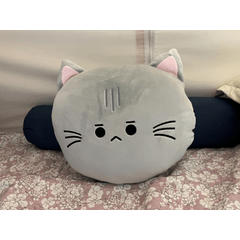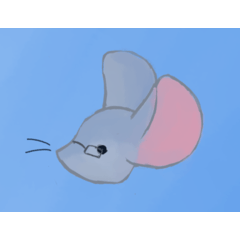Easy neon bars effect with Gaussian Blur!
Prepare your canvas
By default, Clip Studio adds a white "sheet of paper" to the background of our canvas, but if you double-click the image of that layer, the following window will appear.
Choose a dark color, preferably. It will serve to better appreciate how the neon effect works.
You give "OK" and that's it! You will be ready to start
Draw the figure you need
Or you can also use any font you have, if you need to apply the effect to a text! I will choose a round font so that it looks more like a neon bar.
I recommend that you use a pure white, instead of a light color that you are going to use for two reasons: it makes it easier for you to change the color of the neon later, in case you change your mind and; it will give an effect more similar to that of a neon bar.
With 3 figures and 1 text, I will illustrate the example.
Duplicate your layer
Once you are sure your shape is ready, and you are ready to apply the neon effect, duplicate the layer.
You can find the option by right clicking on the layer. For my part, I have set up a quick access, but that is the subject for another tutorial.
Note: In TEXT LAYERS, I recommend that you make a copy of your text in case you change your mind and need to modify it later.
But it is not a mandatory step.
The text that you are going to use, you will need to rasterize it, and then duplicate it.
You can find the option to rasterize by right clicking on the layer. It will be useful to act as a drawing layer and not as a text layer.
Enlarge and color your duplicate layer
You can easily select your figures with CTRL + click on the IMAGE of the layer you want to select.
Once selected you need to look for the option "Enlarge selected area". You can have it in your shortcuts, but if not, you can find it by going to the "Select" tab at the top of the program, and find the option.
You can choose the size to increase that best suits you, but I recommend that you do not put a very high number.
I will increase 5 px.
Keep the expansion type in the second type, and click OK.
And fill with a saturated color of your choice.
Do not be afraid that it is too strong, you will see how it adapts.
Gaussian blur
To start, you will first have to duplicate your layer that has the figure with color, so that you have 3 layers according to your figure:
1. Original white
2. Colored enlarged
3. Colored duplicate
Position yourself on the second layer (the enlarged colored one) and look for the Gaussian Blur option in the Filter tab at the top of the program.
The following window will appear, where you can choose the level of the blur. In my case, I will choose to choose 10. I recommend that in this layer, the blur level is kept light.
We will repeat this same step for the duplicated color layer, but with a much higher level of blur. I will use 150.
In this way, the figures will seem to affect the environment more with their brightness.
Extra tips
You can give a slightly more realistic bar effect by erasing small parts of your shape or text.
First on your main layer, apply a layer mask, which you can find in the quick options of your layers menu.
With a soft eraser, or a soft airbrush in eraser mode, you can start to remove small parts of your figures (not completely), a bit in the style of removing "fill" but keeping the outer lines.
Prioritize this effect in corners or where your lines intersect. You can look up neon bar references to see where it is more common for the glow to be less intense.
Another effect that you can add with this layer mask is to erase parts of your lines, and leave rounded where they do not connect, so it gives the feeling of being bars.
I recommend that if you are going to erase parts of your lines, you do it before duplicating layers and applying the Gaussian blur, so that your duplicated layers have the same shape as the original and the brightness follows that shape.
In order for you to better manipulate the blurring of your duplicate layers, you will need to apply the layer mask on your duplicate layer by right clicking ON THE LAYER MASK and selecting "Apply mask to layer":
After that you can continue with the steps of the tutorial without problems.
As a last tip, you can change the layer mode of your layers with Gaussian blur, to "Add (brightness)" if you have figures below that it can affect. In this way, the brightness adapts according to the tones in which it is on top.
With this effect activated, the intensity can be much higher, so if you consider it necessary, you can adjust the opacity of the Gaussian blur layers.
Outcome
And that would be the result!
Thank you very much for reading, if you have any questions or comments, do not hesitate to express it in this post :)
























Comment